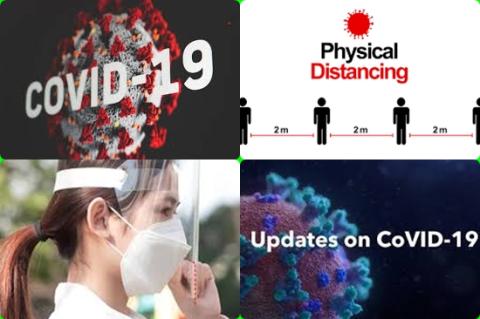
Objectives:
What are the effects of physical distance, face masks and eye protection on COVID-19 virus transmission in health-care and non-health-care (e.g., community) settings?
Study design:
This review article included 172 observational studies across 16 countries and 6 continents, with no randomised controlled trials (RCTs) and 44 relevant comparative studies in health-care and non-health-care settings (n = 25,697 patients).
Results and conclusions:
The investigators found transmission of viruses was lower with physical distancing of 1 m or more, compared with a distance of less than 1 m [n = 10,736, pooled adjusted odds ratio (aOR) = 0.18, 95% CI = 0.09 to 0.38; risk difference (RD) = -10.2%, 95% CI = -11.5 to -7.5, moderate certainty].
Protection was increased as distance was lengthened [change in relative risk (RR) = 2.02 per m, p interaction = 0.041, moderate certainty].
Unadjusted studies and subgroup and sensitivity analyses showed similar results.
The investigators found face mask use could result in a large reduction in risk of infection [n = 2,647, aOR = 0.15, 95% CI = 0.07 to 0.34, RD = -14.3%, 95% CI = -15.9 to -10.7; low certainty], with stronger associations with N95 or similar respirators compared with disposable surgical masks or similar (e.g., reusable 12-16-layer cotton masks, p interaction= 0.090, posterior probability > 95%, low certainty).
Unadjusted studies and subgroup and sensitivity analyses showed similar results.
The investigators found eye protection also was associated with less infection [n = 3,713, aOR = 0.22, 95% CI = 0.12 to 0.39, RD = -10.6%, 95% CI = -12.5 to -7.7, low certainty]. Unadjusted studies and subgroup and sensitivity analyses showed similar results.
The investigators concluded physical distancing of at least 1 m is strongly associated with COVID-19 protection, but distances of up to 2 m might be more effective. Although direct evidence is limited, the optimum use of face masks, in particular N95 or similar respirators in health-care settings and 12-16-layer cotton or surgical masks in the community, could depend on contextual factors; action is needed at all levels to address the paucity of better evidence.
Eye protection might provide additional benefits. Globally collaborative and well conducted studies, including randomised trials, of different personal protective strategies are needed regardless of the challenges, but this systematic appraisal of currently best available evidence could be considered to inform interim guidance.
Original title:
Physical Distancing, Face Masks, and Eye Protection to Prevent Person-To-Person Transmission of SARS-CoV-2 and COVID-19: A Systematic Review and Meta-Analysis by Chu DK, Akl EA, […], Schünemann HJ.
Link:
https://www.thelancet.com/journals/lancet/article/PIIS0140-6736(20)31142-9/fulltext
Additional information of El Mondo:
Find more information/studies on coronavirus right here.